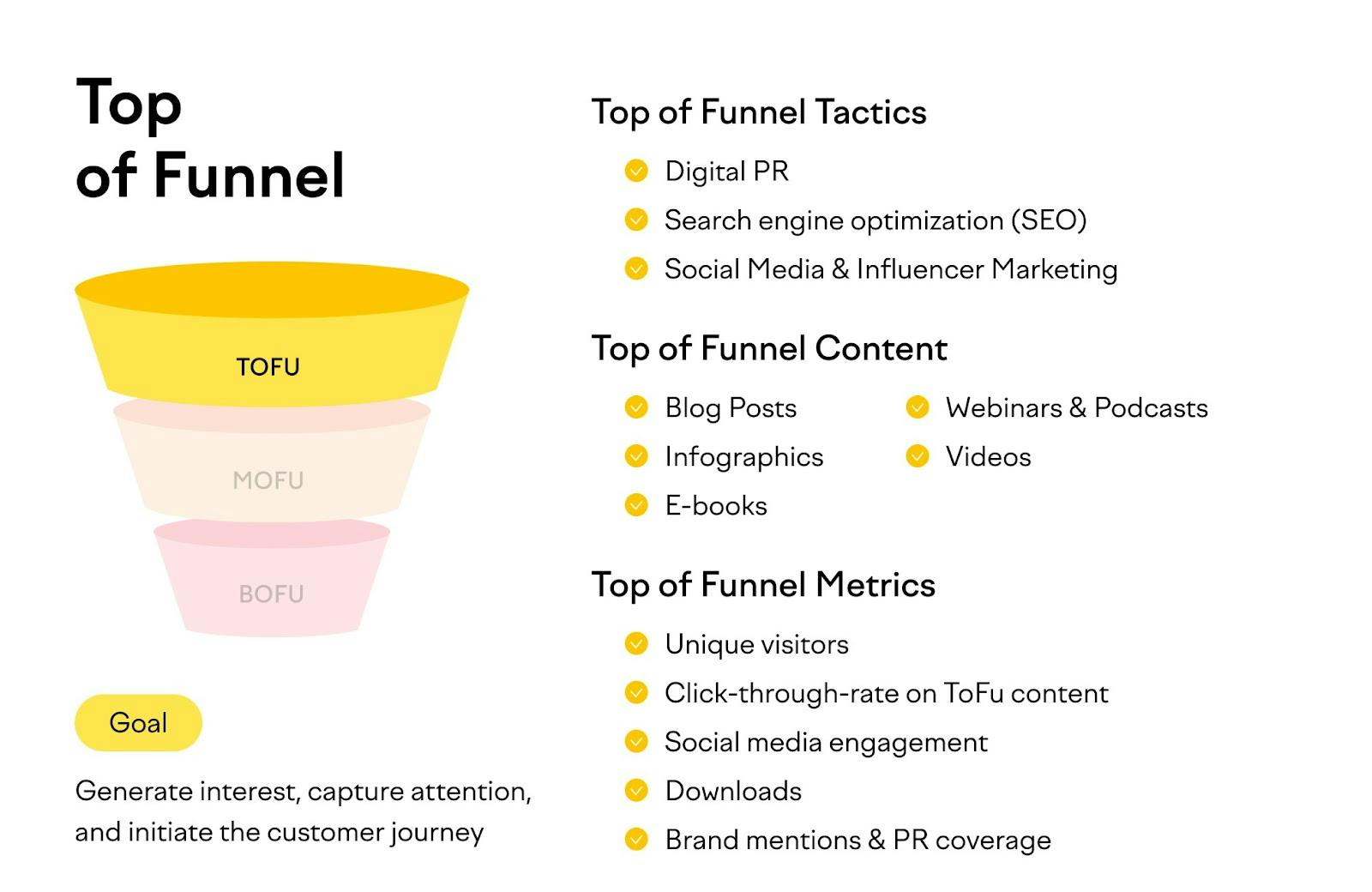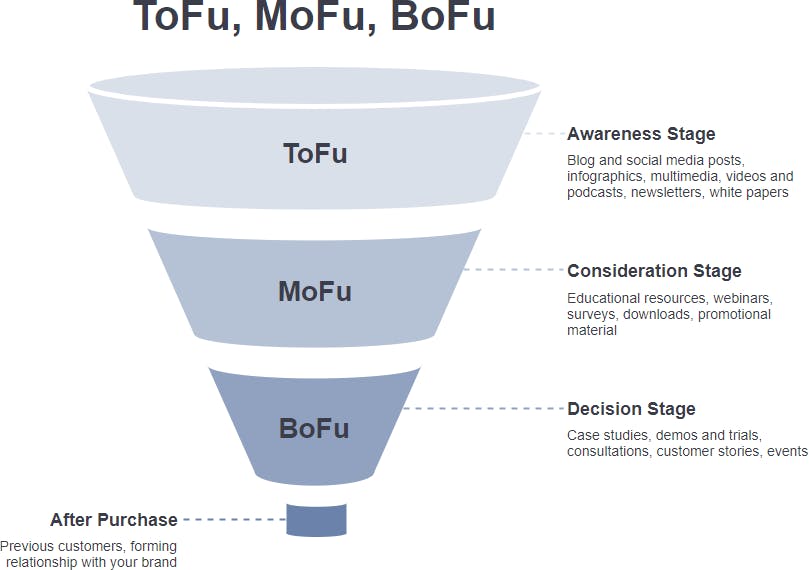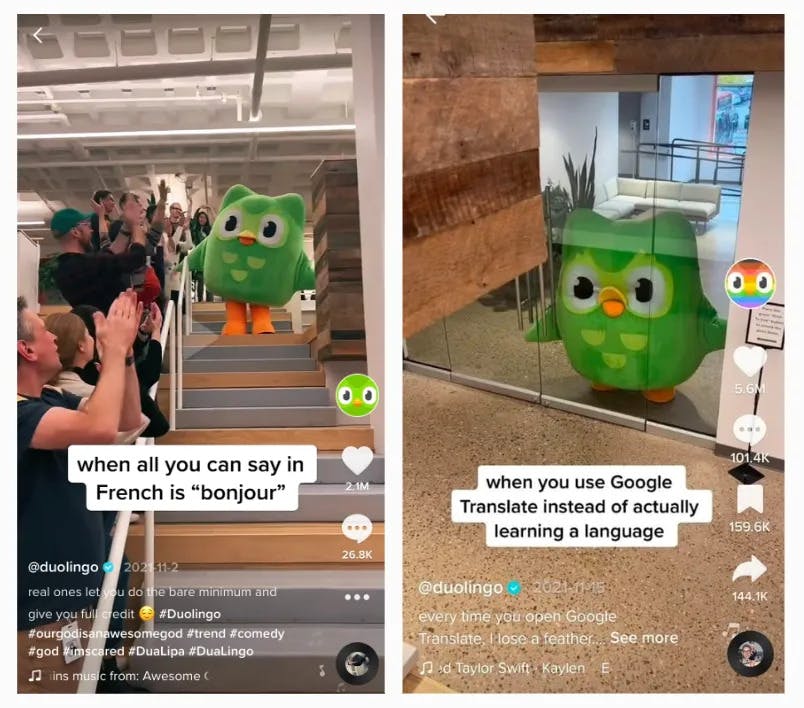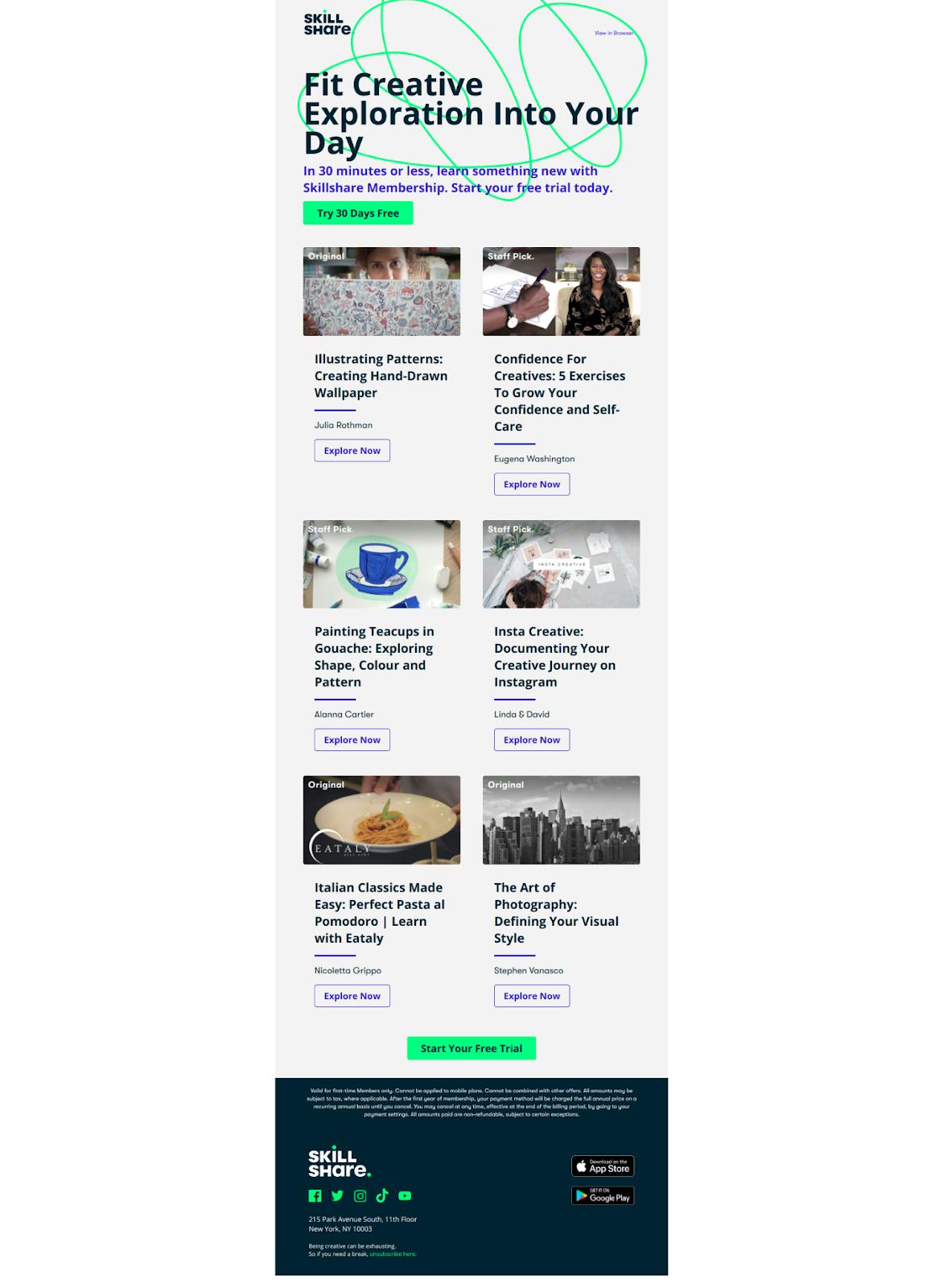Top of the Funnel Marketing: Strategies and Metrics
Mar 28th, 2024

Contents
What is top-of-the-funnel marketing?
Strategies for top-of-the-funnel marketing
Metrics to measure top-of-the-funnel campaigns
Top-of-the-funnel (TOFU) marketing plays a pivotal role in the overall success of a marketing strategy, serving as the initial step in the customer journey. This critical stage of the marketing funnel is where businesses have the opportunity to make a lasting first impression, sparking curiosity and generating interest among their target customers.
Firstly, TOFU marketing lays the groundwork for building brand visibility. By reaching a diverse audience, businesses can build their online presence and make the audience aware of their products or services. Secondly, TOFU marketing helps establish trust and thought leadership. With valuable content, organizations can demonstrate expertise and credibility in their industry. Thus, potential consumers are more likely to trust the company and perceive its messaging and offerings well.
What is top-of-the-funnel marketing?
Top-of-the-funnel marketing encompasses promotional efforts aimed at creating awareness about a brand or product. These activities concentrate on people in the first stage of the buyer’s journey, often including email marketing, social media marketing, content marketing, PR, and SEO. TOFU marketing helps businesses increase brand recognition, educate prospects, and promote a product, service, or brand.

One of the essential elements of TOFU marketing is educational content that provides value and addresses clients’ pain points. At this stage, the audience is people beginning to recognize their problem but may not be familiar with the specific business. Companies can introduce potential customers to their products through entertaining blog posts, insightful webinars, useful infographics, comprehensive ebooks, and engaging social media publications.
TOFU marketing aims to attract a broad audience and build a connection with potential customers. As prospects move down the funnel, marketers can employ middle- and bottom-of-the-funnel strategies to turn leads into customers. Through a well-rounded TOFU strategy, brands can effectively build a strong foundation for customer relationships and business growth.
Top vs middle vs bottom of the funnel
The marketing funnel represents the buyer’s journey from awareness to making a purchase. It includes three main stages that we will compare below.
Top of the funnel refers to the early phase of the buyer’s journey, during which your main objective is to capture your client’s attention. Prospective customers at this stage might not always recognize the pain point they are experiencing. Even if they are aware of the issue, they may not actively seek a solution or haven’t discovered one that effectively addresses their particular problem. While commonly referred to as the lead generation stage, a significant number of leads may drop out either immediately or after a few interactions.
Moving to the middle of the funnel, MOFU activities aim to nurture leads generated from the top of the funnel. Here, the focus shifts to building relationships and providing more targeted content to individuals who have expressed interest. At this stage, prospects assess different options before making a final decision. Marketers use strategies like email campaigns, webinars, and case studies to increase engagement and persuade potential customers to consider a product as a perfect solution to their problem.

Bottom of the funnel, BOFU, is the conversion stage, where marketers focus on turning interested users into marketing qualified leads. At this stage, individuals have demonstrated a clear interest and are now evaluating specific offerings. BOFU strategies include personalized sales interactions, product demonstrations, and tailored content that addresses the remaining concerns or hesitations potential customers may have, ultimately leading to a purchase decision.
In summary, the top, middle, and bottom of the funnel represent sequential stages in the customer journey, each with its unique set of strategies and goals. While TOFU creates awareness, MOFU nurtures leads, and BOFU focuses on conversion, the collective efforts across these stages contribute to building a robust and successful marketing funnel.
Strategies for top-of-the-funnel marketing
Now, we will describe ten strategies to drive the audience to the top of the conversion funnel and provide examples to illustrate them.
Blog posts
Educational blog posts are one of the most effective TOFU marketing strategies as they answer customers' questions and position a business as a reliable source of information. When customers are ready to buy, they are more likely to choose a company that helped them address a specific problem they faced.
To draw in new leads, the chosen topics should be niche enough to captivate the right clients yet broad enough to generate significant traffic to your site and cater to a large number of people actively searching for information. You can address frequently asked questions, dispel myths related to your industry, share insights into market dynamics, or describe complex industry jargon or concepts to make them understandable to a broad audience.
Moreover, blog posts provide a great opportunity for storytelling that resonates with the audience on a personal level. You can describe a company’s journey, discuss industry trends, or share customer success stories. Furthermore, you can offer a behind-the-scenes glimpse into your company culture, values, and day-to-day operations and feature employees to humanize your brand.
For example, HubSpot created a series of in-depth blog posts addressing common problems businesses encounter. By educating its readers, the platform positioned itself as a leading sales and digital marketing authority. Through the strategic application of SEO tactics, the content attracted a large audience and generated leads for the sales funnel.
Landing pages
Specialized landing pages are designed to draw in and engage a specific audience. These pages usually encourage potential customers to interact with a company through a web chat, filling out a contact form, or direct purchase. Marketers often create landing pages to showcase special offers, using them as practical tools for promotions and sales.
Customized landing pages allow marketers to tailor the content to specific audience segments, ensuring visitors receive information that directly addresses their needs, preferences, or pain points. By creating content that caters to the distinct interests of different audience segments, companies can effectively broaden their reach and appeal to a variety of potential customers.
Moreover, by using landing pages, marketers can gain insights into user behavior and preferences. By analyzing the performance metrics of each page, businesses can refine their strategies, understand which elements resonate with their audience, and optimize the customer journey.
Social media posts
Since one in three consumers discover brands through social media, using these platforms as a top-of-funnel marketing strategy makes sense. Social media posts allow brands to demonstrate their personality and values. Companies can humanize their brand through humor, authenticity, or a recognizable tone, building a connection with potential customers.
For example, Duolingo uses TikTok to capture attention, entertain viewers, and engage the audience. Duolingo creates interactive challenges related to language learning. These challenges encourage users to share their language-learning journey, showcasing their progress and using specific Duolingo-related hashtags. The brand leverages the power of user-generated content by inviting subscribers to share their success stories, humorous language-learning moments, or Duolingo experiences.

The real-time nature of social media allows businesses to share timely and relevant content that resonates with current events, trends, or seasonal topics. By including hashtags and aligning content with popular discussions, brands can increase their reach and tap into broader audiences.
Collaborating with influencers increases visibility and adds credibility to a brand’s story. Influencers often establish themselves as authorities within specific niche markets, so their recommendations serve as evidence of the quality of the products and services they promote. Integrating a brand into their content feels less like a traditional advertisement and more like a personal recommendation.
Search engine optimization
SEO is a powerful strategy for TOFU marketing, enhancing brand visibility and awareness. This method involves optimizing content by including keywords and phrases that target specific audiences, creating effective title tags and meta descriptions, implementing a strategic internal linking structure, and building backlinks.
SEO is not only about keywords and rankings but also about creating a positive user experience. A well-designed website that loads quickly, with easy navigation and mobile responsiveness, improves the user experience and leaves a good impression on visitors.
Moreover, SEO involves creating relevant content that aligns with users' search queries. This content serves as a valuable resource that not only answers users' questions but also introduces them to the brand and its offerings. High-ranking content is more likely to be shared on social media networks. Likes, shares, and comments contribute to the brand's overall visibility, attracting more people to the website.
Email newsletters
Email newsletters play a crucial role in top-of-the-funnel marketing by providing a personalized communication channel to engage with potential customers. These emails typically contain updates, curated content, or special offers based on subscribers’ interests, behaviors, and demographics. Tailoring content to specific audience segments helps in delivering more relevant messages, increasing the chances of engagement.
Including customer testimonials or success stories in newsletters helps build trust. When potential customers see positive experiences from others, they are more likely to trust and consider your brand. Moreover, newsletters often include CTAs encouraging recipients to visit your website, read a blog post, or explore a specific landing page. It drives traffic to your online assets, increasing overall visibility.
Skillshare, an online learning platform, uses email newsletters to promote its new offerings. The newsletter introduces upcoming classes across various topics, encouraging users to explore new skills and knowledge. By regularly updating subscribers on the latest courses, Skillshare aims to attract individuals interested in personal and professional development, increasing brand awareness.

Videos
Using videos as a TOFU marketing strategy, you can provide educational content, tell a story, or describe a product’s features. You can also convey a brand message, introduce the company's employees to the audience, or demonstrate a company’s logo. This is particularly true if the video adheres to the style guide established by the business and reflects the website's design.
For industries with complex products or services, videos offer an excellent way to simplify and explain concepts. Tutorial videos, product demonstrations, and explanatory animations help potential customers understand the value and functionality of a product or service.
Videos are highly shareable on social media platforms. Whether it's a short promotional video or an engaging storytelling piece, shareable content increases a brand’s reach and visibility. Platforms like YouTube are search engines in themselves, and optimized videos can appear in both YouTube and Google search results, increasing the chances of attracting a wider audience actively searching for related content.
Blendtec, a blender manufacturer, created a series of top-of-the-funnel videos titled Will It Blend? The videos demonstrate the attempts to blend items like iPhones and golf balls. This entertaining and humorous content not only introduces viewers to the brand but also highlights the quality and functionality of Blendtec products, engaging a broad audience through shareable and memorable videos.
Webinars
Consider organizing workshops or webinars tailored to the specific target audience’s needs. Webinars attract a diverse audience, including individuals in the early stages of the buyer's journey. To attend a webinar, participants typically need to register and provide their contact information. This registration process serves as a lead generation tool, capturing details of prospects who have demonstrated interest in the topic.
Webinars are an effective platform for marketing products. Live demos and overviews allow potential customers to assess the value and functionality of a solution, helping them understand how it addresses their needs.
In addition, webinars often include networking components such as chat rooms or discussion forums. This develops a sense of community among attendees, creating a space for participants to connect, share experiences, and discuss industry-related topics.
Paid advertising
Using online advertisements, such as banner ads, social network ads, search engine ads, and native ads, can be a worthy strategy to draw customers into your sales funnel. Platforms like Facebook, Instagram, and X offer sponsored content options that appear in users' feeds. These visually engaging ads are designed to seamlessly blend with organic content, increasing the likelihood of catching the audience's eye and generating brand awareness.
Paid advertisements can be used for retargeting, reaching people who have previously visited a brand's website. This strategy aims to re-engage individuals who showed initial interest but did not take the desired action, such as purchasing a product or filling out a form.
In addition, paid ads can be part of affiliate marketing strategies, where partners promote a brand's offerings in exchange for a commission. This collaborative approach extends the brand's reach through various channels, creating awareness among new audiences.
Public relations
Getting media attention for your brand is an excellent way to grow your audience and build trust. PR professionals create press releases to announce significant events, product launches, or company news. By establishing relationships with journalists and media outlets, PR efforts focus on building a positive public image for a brand, ensuring that the brand's story reaches the right audience.
PR strategies position key figures within the organization as thought leaders in their industry. By organizing discussions, contributing to industry publications, or participating in expert panels, a brand builds credibility and enhances its reputation.
Furthermore, PR initiatives often involve creating and promoting social responsibility campaigns. PR campaigns help raise awareness among socially conscious consumers by associating the brand with positive initiatives that align with the target audience’s values.
Podcasts
Podcasts are accessible to a global audience. Creating relevant and engaging content can attract listeners from various demographics, increasing brand exposure at the top of the marketing funnel. Through podcasting, your brand can showcase its personality and values. This helps create a relatable and humanized image, making it easier for listeners to connect emotionally with your brand.
Hosting a podcast allows a brand to demonstrate its expertise by featuring industry experts, key opinion leaders, or internal specialists. Discussing relevant topics and answering audience questions positions the brand as a knowledgeable authority in the field, building trust and credibility.
In addition, digital marketers can repurpose podcast episodes across various channels, including social media, blogs, and newsletters. It increases your reach and strengthens your marketing message through different mediums.
Mailchimp, an email marketing platform, launched Call Paul, a podcast where small business owners can call in with their marketing questions. The hosts provide advice, share stories, and offer tips to the audience. This content not only highlights Mailchimp's expertise in marketing but also creates a sense of community by directly engaging with their target audience and addressing their concerns.
By strategically employing a combination of these tactics, businesses can cultivate lasting relationships as customers progress through the marketing funnel.
Metrics to measure top-of-the-funnel campaigns
We will list five metrics that will help you manage the performance of top-of-the-funnel marketing. By regularly analyzing these metrics, you can identify successful tactics, optimize campaigns, and continuously refine marketing efforts.
Website traffic
Website traffic is a crucial metric for TOFU marketing. This metric gives insights into the volume of users engaging with the brand's online content. A consistent increase in the number of visitors reflects successful efforts in driving awareness and attracting potential customers. Analyzing traffic sources helps determine the most useful channels for reaching the target customers.
Click-through rate
CTR measures the percentage of people who clicked on specific ads out of the total number who viewed them. For TOFU marketing, particularly in paid advertising, a high CTR indicates that the ad content is compelling and resonates with the audience. It demonstrates the success of efforts to motivate users to take the next step.
Social media engagement
Likes, comments, shares, and follower growth on social media give valuable insights into the impact of TOFU strategies. High engagement rates indicate that the brand's content is relevant to the audience and attracts attention. In addition, tracking the demographic data of engaged users helps ensure the brand reaches its intended audience and generates awareness among potential customers.
Number of leads generated
The number of leads generated is a critical metric for evaluating top-of-the-funnel success. This metric includes individuals who have expressed interest in the brand by subscribing to newsletters, downloading resources, or participating in webinars. Growing number of leads reflects effective strategies that capture and nurture potential customers.
Brand mentions
Monitoring brand mentions in media coverage, online articles, and social media conversations provides insights into the success of public relations efforts at the top of the funnel. Positive mentions and increased visibility suggest that the brand is gaining recognition and generating awareness. This metric also helps estimate the effectiveness of PR campaigns and strategic partnerships in shaping a positive brand reputation.
Implementing and measuring TOFU marketing strategies is critical for any brand aiming to create a robust foundation for customer acquisition and long-term success. By strategically combining SEO, various types of content marketing, social media, email newsletters, videos, webinars, paid advertisements, and public relations, brands can create a multi-faceted approach that maximizes visibility and engagement at the top of the funnel. Use these insights to refine your marketing approach and ensure your strategies align with your target audience's preferences.
